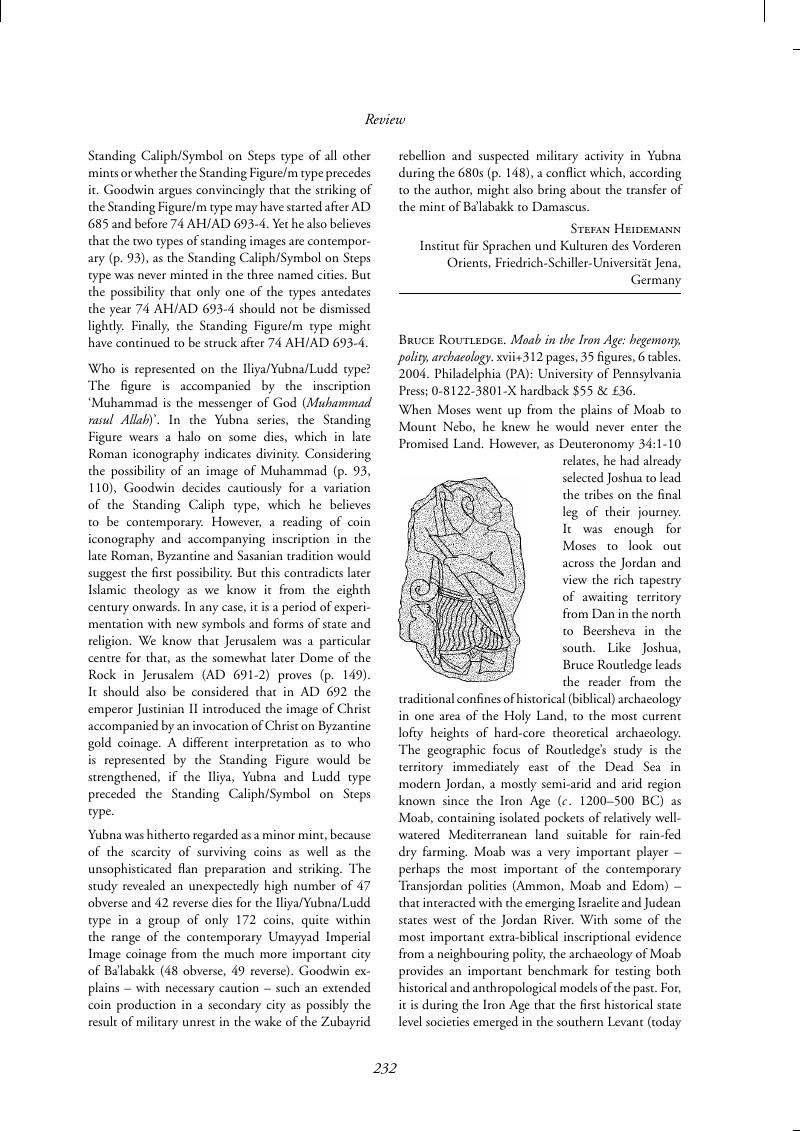No CrossRef data available.
Article contents
Bruce Routledge. Moab in the Iron Age: hegemony, polity, archaeology. xvii+312 pages, 35 figures, 6 tables. 2004. Philadelphia (PA): University of Pennsylvania Press; 0-8122-3801-X hardback $55 & £36.
Published online by Cambridge University Press: 02 January 2015
Abstract
An abstract is not available for this content so a preview has been provided. Please use the Get access link above for information on how to access this content.

- Type
- Review
- Information
- Copyright
- Copyright © Antiquity Publications Ltd. 2006
References
Bienkowski, P. & Van DER VEEN, E.. 2001. Tribes, trade, and towns: a new framework for the late Iron Age in southern Jordan and the Negev. Bulletin of the American Schools ofOriental Research
323:21–47.Google Scholar
Joffe, A.H.
2002. The Rise of secondary states in the Iron Age Levant. Journal ofthe Economic and Social History ofthe Orient
45: 425–67.Google Scholar
Labianca, O.S. & Younker, R.W.. 1995. The kingdoms of Ammon, Moab and Edom: the archaeology of society in Late Bronze/Iron Age Transjordan (c. 1400–500 BCE), in Levy, T.E. (ed.) The archaeologyofsocietyin the HolyLand: 399–415. Leicester: Leicester University Press.Google Scholar
Levy, T.E.
2004. Some theoretical issues concerning the rise of the Edomite kingdom - searching for ‘Pre-Modern Identities’, in Al-Khraysheh, F. (ed.) Studies in the historyandarchaeologyofJordan, vol. 8: 63–89. Amman: Department of Antiquities of Jordan.Google Scholar
Schloen, D.
2001. The house of the father as fact and symbol: patrimonialism in Ugarit and the ancient Near East. Winona Lake: Eisenbrauns.Google Scholar




